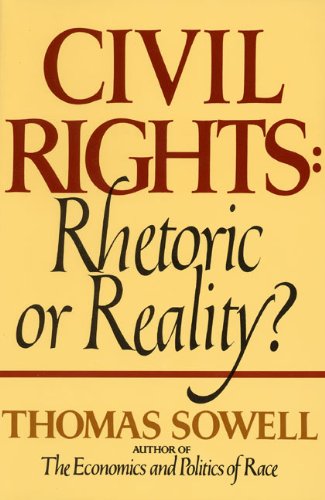A Brief Book Summary from Books At a Glance
By Benjamin Montoya
Editor’s Note: This “Bonus” Book Summary continues our series on culture. We hope our members are enjoying these “extra” summaries and the quick learning they afford.
About the Author
Thomas Sowell is a Senior Fellow at the Hoover Institution, Stanford University
Introduction
Did you know that there is a difference between civil rights and “civil rights?” The former is very important whereas the latter is a movement. But did you know that some groups use civil rights as mere rhetoric that, in reality, do not help the groups they supposedly advocate for? Consider this crucial book to learn more.
Table of Contents
Chapter 1 The Civil Rights Vision
Chapter 2 From Equal Opportunity to “Affirmative Action”
Chapter 3 From School Desegregation to Busing
Chapter 4 The Special Case of Blacks
Chapter 5 The Special Case of Women
Chapter 6 Rhetoric or Reality?
Chapter 1: The Civil Rights Vision
The civil rights movement is something that may not seem to be at first glance. At first glance, it may seem to be focused on certain civil rights issues like the desegregation of schools. That has been part of what this movement has sought to do. The Supreme Court case of Brown v. Board of Education achieved that very result. But this one achievement is part of a much larger movement.
The civil rights movement today is part of a larger socialistic agenda. It is in itself a worldview. As such, it has general principles:
- Statistical disparities in incomes occupations, education, etc., represent moral inequities and are caused by “society.”
- Innate inferiority explains policies and practices of differential treatment, whether expressed in overt hostility or in institutional policies or individual decisions that result in statistical disparities.
- Political activity is the key to improving the lives of those on the short end of differences in income, “representation” in desirable occupations or institutions, or otherwise disadvantaged.
These general principles have been common to socialism throughout the world. What should we think about these principles?
Statistical disparities are something that must be carefully considered. It is all too easy to misrepresent numbers to make a case that other statistics would refute. That has often been the case for the socialistic movement. They show only what supports their position.
Innate inferiority is a popular political aphorism that is repeatedly difficult to prove. The claim is related to discrimination. It is claimed that due to the innate inferiority of certain groups, these groups have been negatively discriminated against. Where politicians point fingers is to statistics that show how differences, e.g., between men and women, have an impact on something else that is important, e.g., salaries, test scores, promotions.
Finally, political activity has not shown itself to improve these situations. When you consider the history of what socialism has brought to counties that have used it, it has never worked. It is a system that demands more resources and can never provide what it promises. It is also a system that benefits political leaders more than anyone else. In fact, there are built-in incentives for them to lead in this direction.
Chapter 2: From Equal Opportunity to “Affirmative Action”
The term “civil rights” has transformed its meaning over time. During the court case previously mentioned, it meant that all individuals should be treated equally under the law regardless of their race, religion, sex, or other social categories. There is perhaps few today who would argue with this definition of civil rights. As part of the socialistic movement as previously described, the term has come to mean something much more.
What has happened with this term is that it has changed from the legal right of equal opportunity to what has become known as affirmative action. That is, instead of just making it a legal requirement for people to be treated equally, it has become law that now that there has to be a representation of different social categories in the workplace. In other words, it is no longer an equal opportunity that it is the issue. Now it has become enforced that these different groups have opportunities. Things have moved from “rights to quotas.” That is a big change.
[To continue reading this summary, please see below....]The remainder of this article is premium content. Become a member to continue reading.
Already have an account? Sign In
